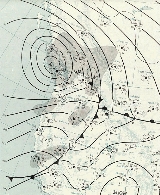
Columbus Day Storm of 1962
Overview
Cyclone
In meteorology, a cyclone is an area of closed, circular fluid motion rotating in the same direction as the Earth. This is usually characterized by inward spiraling winds that rotate anticlockwise in the Northern Hemisphere and clockwise in the Southern Hemisphere of the Earth. Most large-scale...
that ranked among the most intense to strike the United States Pacific Northwest
Pacific Northwest
The Pacific Northwest is a region in northwestern North America, bounded by the Pacific Ocean to the west and, loosely, by the Rocky Mountains on the east. Definitions of the region vary and there is no commonly agreed upon boundary, even among Pacific Northwesterners. A common concept of the...
since at least 1948, likely since the January 9, 1880 "Great Gale
Great Gale of 1880
The Great Gale of 1880 was an extremely deep area of low pressure that impacted the Northwest United States on January 9, 1880.- Newspaper Reports and Anecdotes :...
" and snowstorm. On a larger scale, the Columbus Day Storm of 1962 is a contender for the title of most powerful extratropical cyclone recorded in the U.S.
Unanswered Questions

